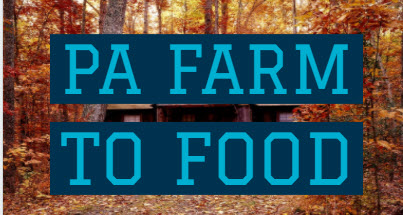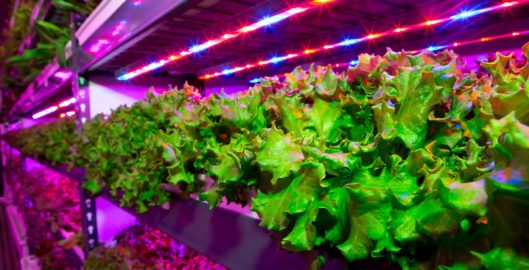Blog
Boston Globe: 3 policies for the future
On 26, Nov 2018 | In Blog, Featured, GMO Labeling, GMO’s and The Environment | By admin
Food is going high-tech — policy needs to catch up with it
BY THE BOSTON GLOBE EDITORIAL BOARD
or generations newspaper editorials have been the “eat your spinach” part of the operation. But what if that spinach can now be organic baby spinach, or hydroponically grown? What if we can eat it year round — and from just around the corner?
With a warming planet, the need for high-tech food and high-tech food policies is undeniable. Both are going to play an increasingly vital role in the planet’s future — and the way we eat. Here are a few ways to use science to steer food into a more sustainable path.
Learn to love GMOs, and resist efforts to demonize or prohibit them. Genetically modified food sets off alarm bells for purists, but crops designed to last longer or resist disease are increasingly necessary.
The good news is that new federal labeling regulations, which could become final by Dec. 1, will preclude the kind of state-by-state labeling regulations that Vermont had already indulged in and that Massachusetts has been perpetually on the cusp of enacting.
The even better news is that the science of food — of producing fruits with a longer shelf life, wheat that requires less water or fertilizer — is advancing so fast that even the foodie fearmongers can’t keep up.
First on the federal role: While moving at a glacial pace, the US Department of Agriculture has at long last brought forth a final set of regulations designed to implement a law passed by Congress in 2016 to deal with standards for disclosing bioengineered ingredients. Not surprisingly the new regs generated a huge amount of controversy — more than 14,000 comments received by the agency during the public comment period.
Assuming the regs are indeed finalized Dec. 1, they won’t go into effect until Jan. 1, 2020. What consumers are likely to notice is that GMO labeling will become “BE food,” or “bioengineered food.” And since at least two-thirds of all foods sold in the US contain some ingredients in that category — consumers are indeed likely to see it everywhere.
What it will accomplish is to prevent every state and locality from drafting its own labeling laws and, in the process, making the free movement of good products from state to state difficult if not impossible. And it will let innovation continue unhindered.
The future of seafood in the United States is aquaculture. Even the king of seafood, Roger Berkowitz, acknowledges that. “The technology has gotten so good with submersible pens,” said Berkowitz, chief executive of the Legal Sea Foods empire. “It’s a game changer.”
Berkowitz is particularly excited about the prospect of fish farms in federal open waters. Aquaculture in Massachusetts is largely confined to shallow waters; think oyster beds on Cape Cod. Of course, this country for years has talked about offshore fish farming, but the time has come, with wild fish stocks dwindling. In 2017, the US imported a record amount of seafood, more than 6 billion pounds, and exported only about 3.6 billion pounds.
While Massachusetts and some municipalities have regulated aquaculture, what’s needed now is a federal regulatory framework to support aquaculture in the ocean. It hasn’t been easy navigating the concerns of environmentalists, fishermen worried about their own livelihoods, and ships attached to particular routes. The ocean may be big, but surprisingly not big enough to accommodate everyone’s needs.
Congress can play a big role: Get a bill that everyone likes. Here’s another thought: How about supporting aquaculture as part of the farm bill, something US Representative Seth Moulton would like to see. With Democrats taking back the majority in the House, maybe this could get done next year.
Clear federal policies could enable the prospect of fish farming using the infrastructure of offshore wind turbines. Without such policies, the future of fish farming will remain murky, because these operations are expensive and investors don’t like uncertainty.
“No one would spend a dime on that,” said Peter Shelley, senior counsel at the Conservation Law Foundation, which has been closely following the development of aquaculture in the ocean. “It makes Cape Wind look like a sure bet.”
Assume change. Farm and food policies tend to deal with what we eat and grow now, but climate change should end that way of thinking. The government and industry need to anticipate disruption, and be ready to adapt, rather than pour money into trying to preserve vanishing industries that can’t be sustained any longer.
Rising temperature of oceans, for example, have forced the cod and lobsters to flee north to colder waters. We lament the loss of cod in Massachusetts, but Southern fish species are flocking to us now. In other words, we need to get used to “Cape Mahi-Mahi.”
Warmer temperatures in New England could extend the growing season for blueberries, strawberries, peaches, and corn. That could be a silver lining for consumers and farmers’ markets.
Food policy is often inherently conservative: organic food fans and proponents of farm subsidies want different versions of the same thing, which is to cling to the way food’s always been. But food is going to change whether we like it or not — and our food policies should try to direct those changes, not stop them.
http://apps.bostonglobe.com/ideas/graphics/2018/11/the-next-bite/the-supply-chain-editorial/











